A revised BMW i3 concept car has been revealed at an event to mark the opening of the first showroom dedicated to BMW i brand cars on London’s Park Lane.
The revised BMW i3 concept reveals a more production realistic interior and exterior, ahead of the car’s mainstream production in 2013. Seen here, the i3's cabin is all-new, while the exterior remains the same as before apart from a new paint colour. The BMW i3 was unveiled alongside a 20kg electric bicycle concept, called the BMW i Pedelec.
According to Benoit Jacob head of i design, "What we see here is 85 to 90 per cent production ready. Very close, but visual details like doors can be expected to change - the i8 spider shown in Beijing didn't have see through doors so that gives clues."
The BMW i3 is constructed using two independent modules. The structural Drive module is made of aluminium and incorporates the battery, drive system and chassis. The second, so-called Life module is made of lightweight carbonfibre reinforced plastic. The car’s target weight will not exceed 1250kg.
The BMW i3 is powered by a 168bhp electric motor that sits over the rear axle the electronics systems, transmission and differential, ensuring no cabin encroachment. It produces 170 lb ft of torque from a standstill and a single-speed gearbox delivers power to the rear wheels. BMW claims the i3 will accelerate from 0-37mph in under four seconds and to 62mph in under eight seconds. The i3 has a top speed of 93mph.
Energy comes from lithium ion batteries positioned under floor to ensure the best weight balance. BMW claims that the i3 will achieve a pure electric range of 100 miles and has confirmed that the model will be made available as a range extender model too, which is where BMW sees most potential for growth of sales.
As a pure EV, the car can be fully charged from a standard socket in six hours. An 80 per cent charge can be achieved from a high-power charging socket in just one hour.
Lifting off the throttle provokes regenerative braking forces. A selectable coasting mode disconnects the electric motor from the drive axle. In this mode the i3 is driven only by its own kinetic energy. The i3 also has an Eco Pro mode that minimises air-con power consumption and shuts down other functions such as heated seats and heated door mirrors.
The interior Life module has more space than any conventional car currently on sale, as a result no central tunnel bisecting the cabin. Passengers in the front and rear sit on full length benches. The motor and battery position means the car has more than 200 litres of luggage space.

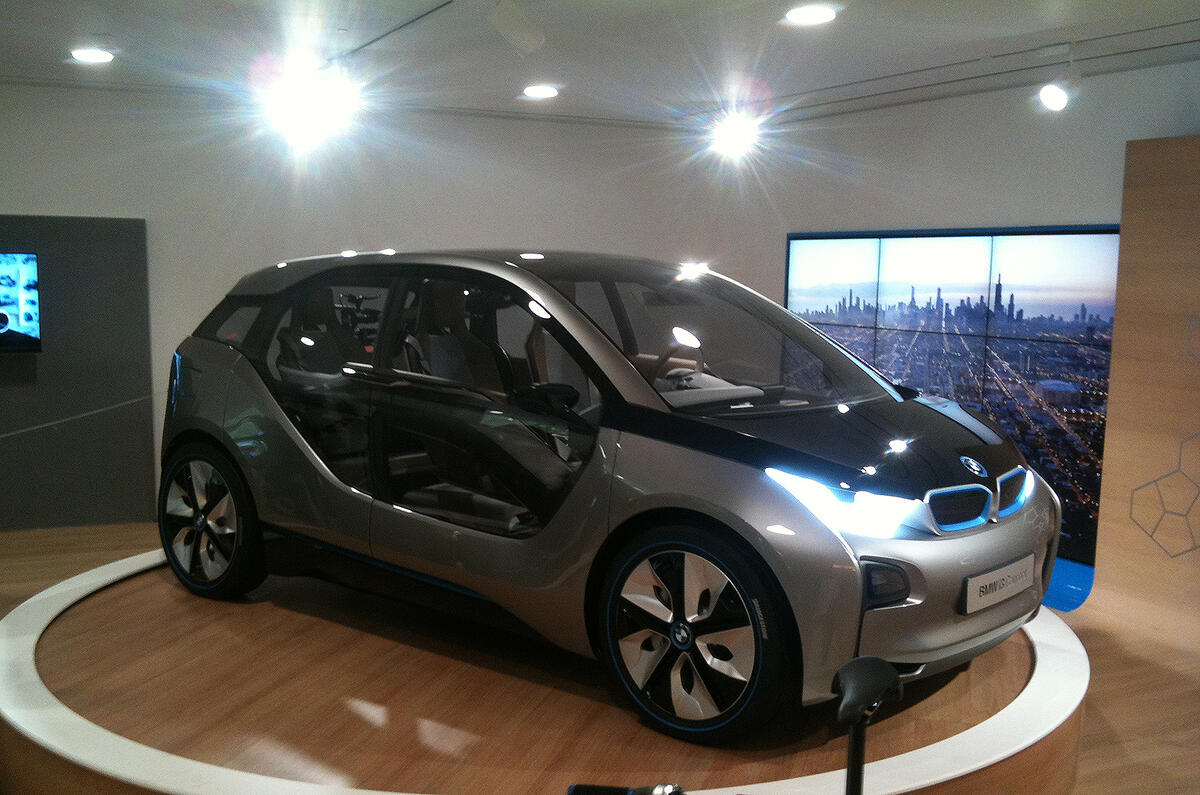
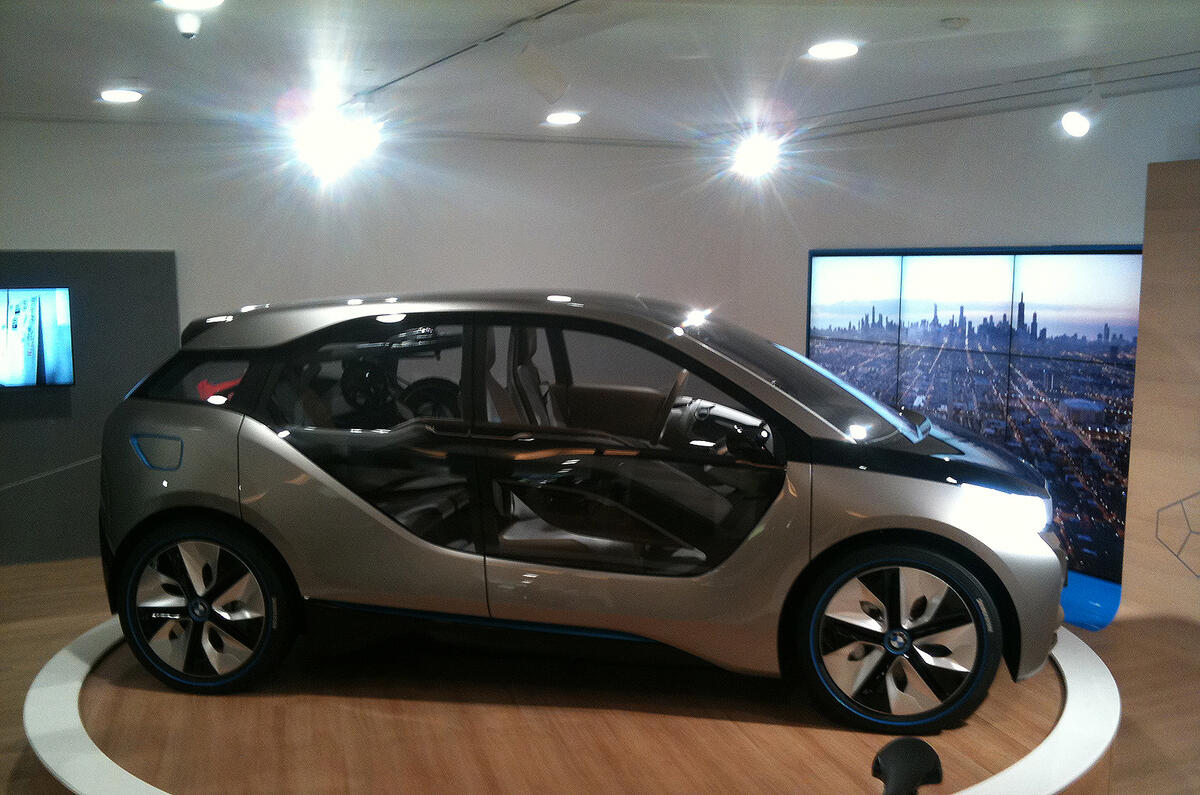
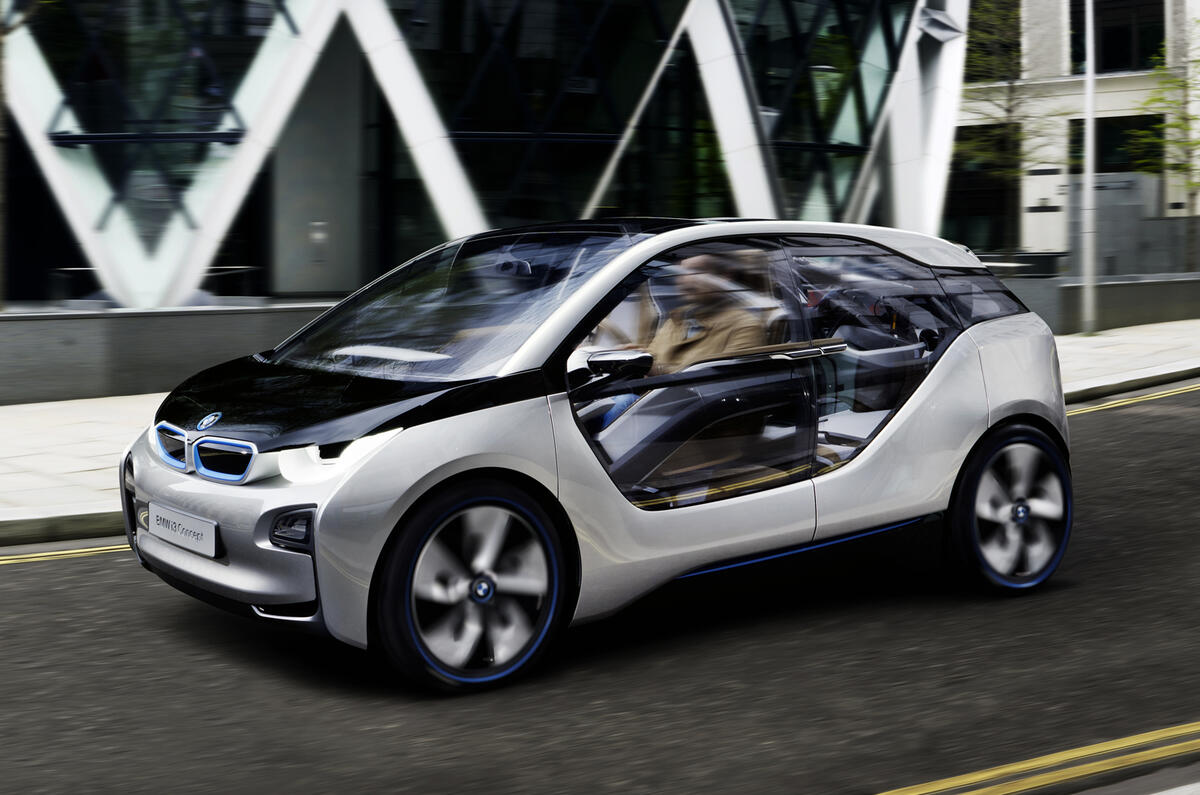
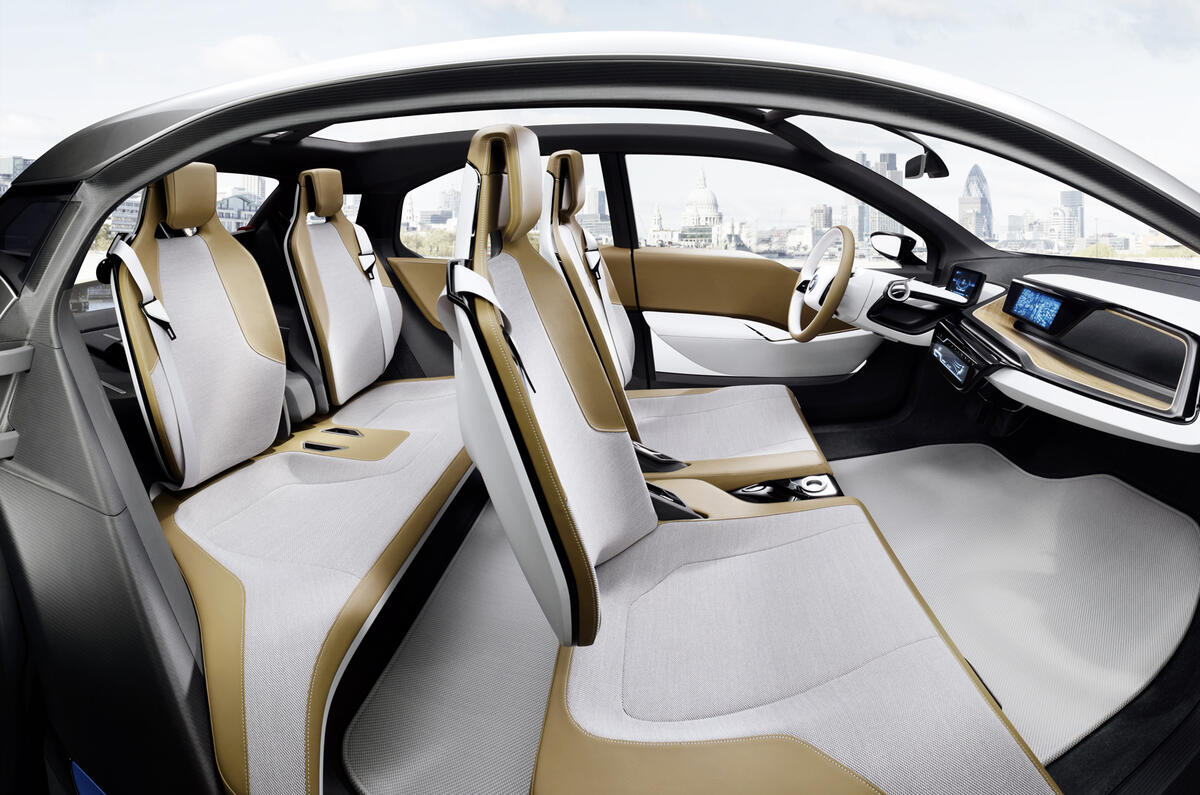

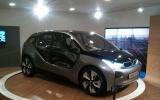
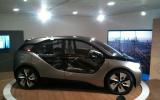


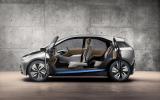



Join the debate
Add your comment
And Now ... Back To Reality ...
Futuristic looking (check) ... Very eco-friendly (check) ... Help direct from the manufacturer (check) ... Affordable price (erm) ...
Needless to say, like the BMW i8, this car will only be within the purview of the well-heeled environmentalist ...
Groan! Why do all eco-type
Groan! Why do all eco-type cars look as if they're designed for a 'Stepford wife' or the sort of pious glasses- and sandal-wearing male that self-conciously carry their offspring in a forward-facing pouch thingy?
Saving weight?
It's possible the use of these electrical components (screens and electric mirrors) saves weight (as electric v manual windows saves weight), while maintaining a similar power draw as traditional instruments/displays. How much power could adjusting the mirrors use anyway?